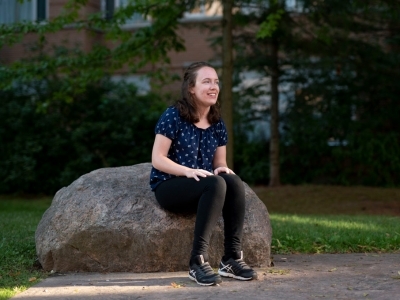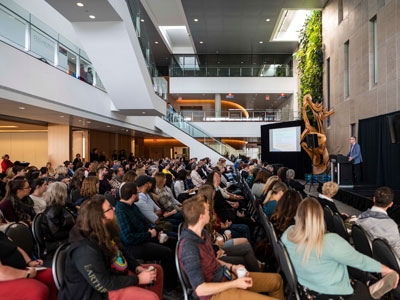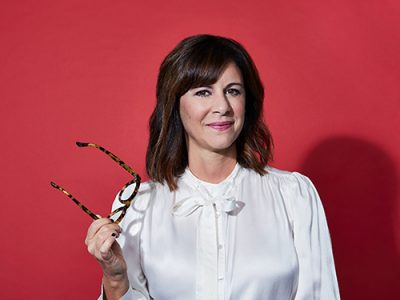By Dan Rubinstein
Photos by Leo Solano Mendez
Storytelling is central to Indigenous cultures, and one particular type of storytelling has a vital role to play in Canada’s long journey toward reconciliation.
“The modus operandi of journalism is truth, and it’s called ‘Truth and Reconciliation’ for a reason,” says Carleton University journalism professor Duncan McCue, the director of a transformative new program that will prepare Indigenous youth for careers in media.
“You can’t have reconciliation without dealing with some of the hard truths about this country. To change the narrative to a more truthful one, Indigenous voices need to be heard, and there’s a growing appetite among Indigenous folks to learn these skills.”
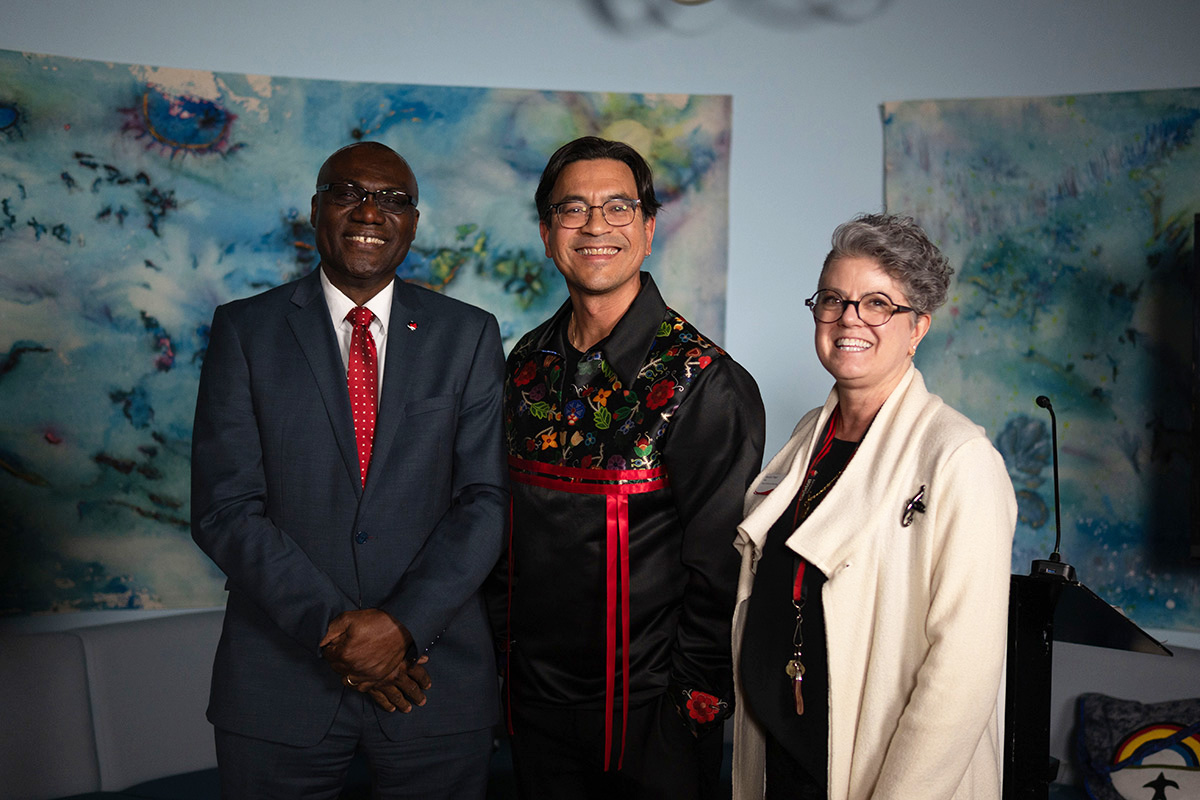
Carleton University President and Vice-Chancellor Wisdom Tettey, journalism professor and program director Duncan McCue, and Faculty of Public and Global Affairs Dean Brenda O’Neill
This September, two dozen or so students will be starting the Certificate in Journalism in Indigenous Communities (CJIIC). The 10-month program combines remote learning with three in-person intensives, a two-week internship, mentorship and wraparound academic and cultural support, which are all key to student success.
Developed in collaboration between Carleton’s School of Journalism and Communication and two Indigenous institutes — the M’Chigeeng First Nation’s Kenjgewin Teg on Manitoulin Island and the First Nations Technical Institute on Tyendinaga Mohawk Territory near Belleville — the CJIIC represents the best of both worlds.
Students will be able to study in their own communities, without uprooting their lives. But they will also come together as a group periodically for hands-on training and land-based learning, with accommodation, food and travel costs covered.
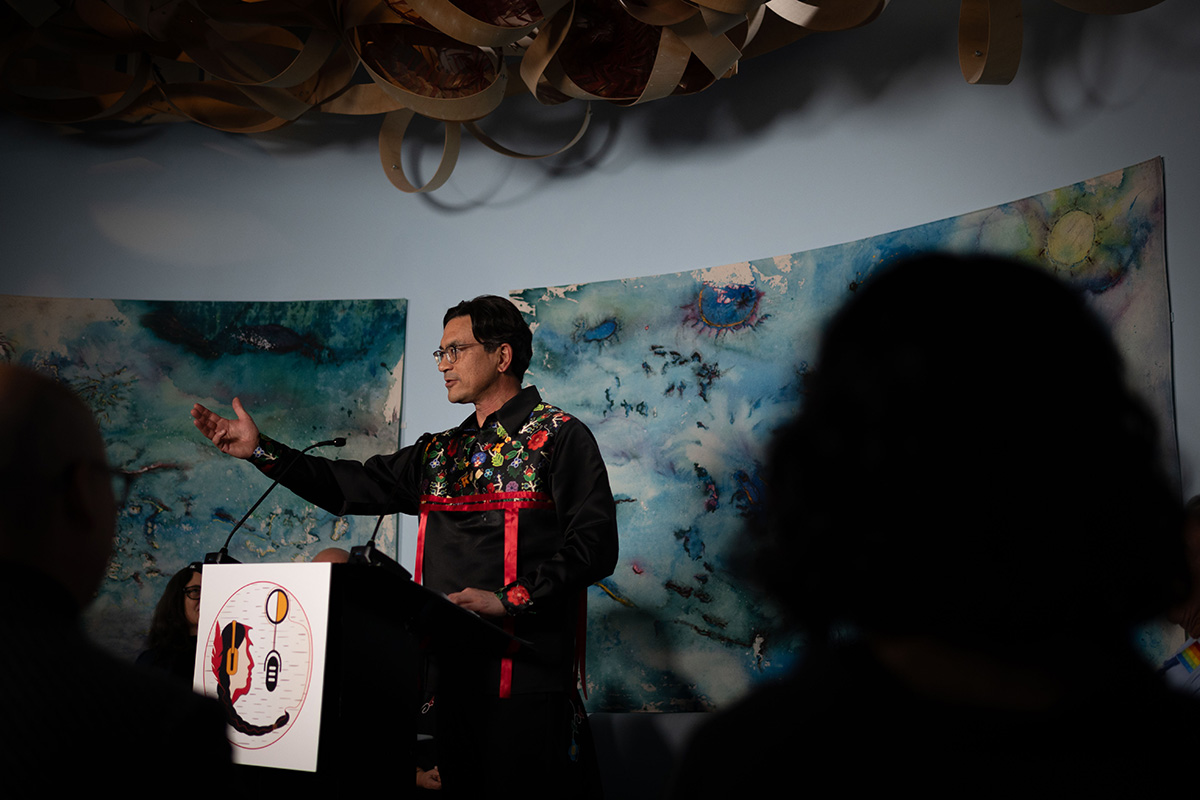
Prof. McCue delivers a speech inside the Ojigkwanong Indigenous Student Centre
“This idea has been percolating for a long time,” says McCue, an Anishinaabe from the Chippewas of Georgina Island First Nation in southern Ontario who hoped to start a program like this when he joined Carleton’s faculty in 2023.
“The number of Indigenous students is low at every journalism school in Canada. There are significant cultural, financial and geographic barriers. Before the pandemic, everybody said that you can’t teach journalism online. But that thinking doesn’t hold water anymore. We know that we need to — and can — reach students in the places where they live.”
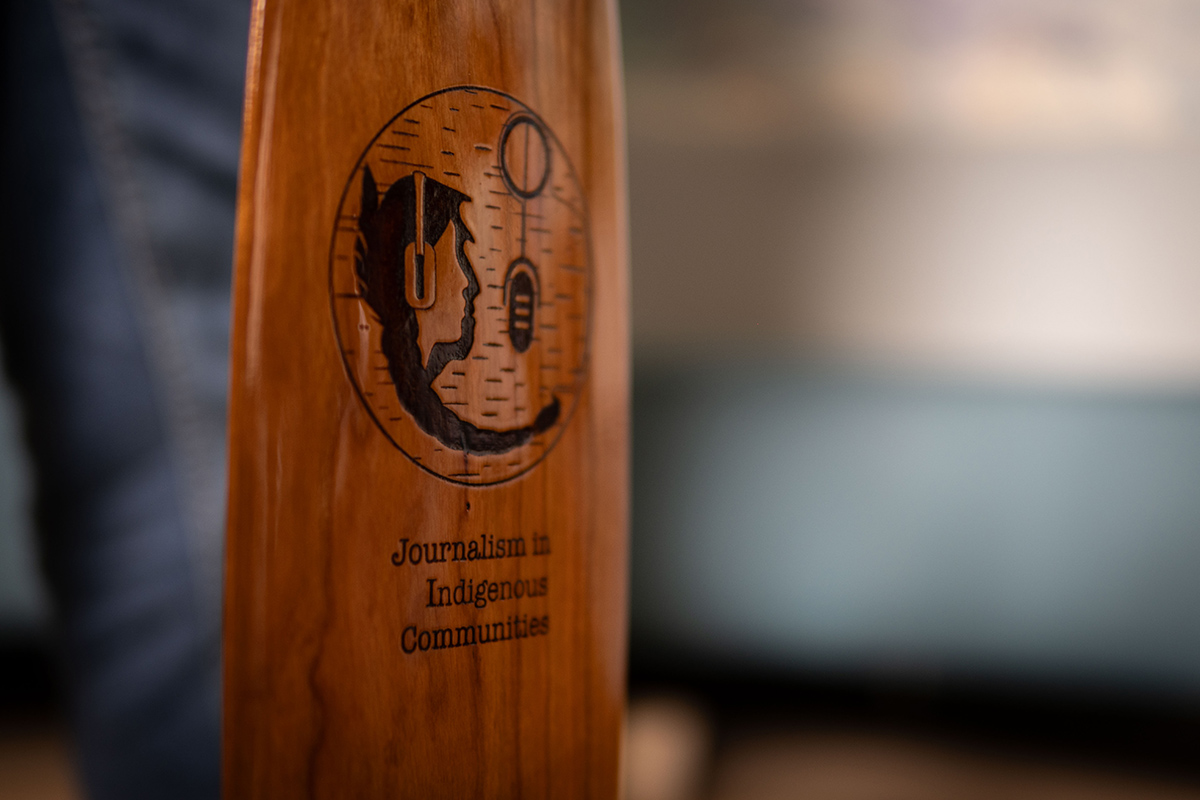
Culture and Skill Development
The CJIIC team is currently talking to experienced Indigenous journalists about teaching in the program and recruiting students for the inaugural cohort.
The first week-long intensive will take place in September on Manitoulin Island, where students will be introduced to the fundamentals of journalism and the craft’s tech equipment and spend time with one another on the land.
“That cultural component is important,” says McCue.
“It doesn’t feel like walking into a classroom. We want Indigenous pedagogy to be baked into every aspect of this program.”
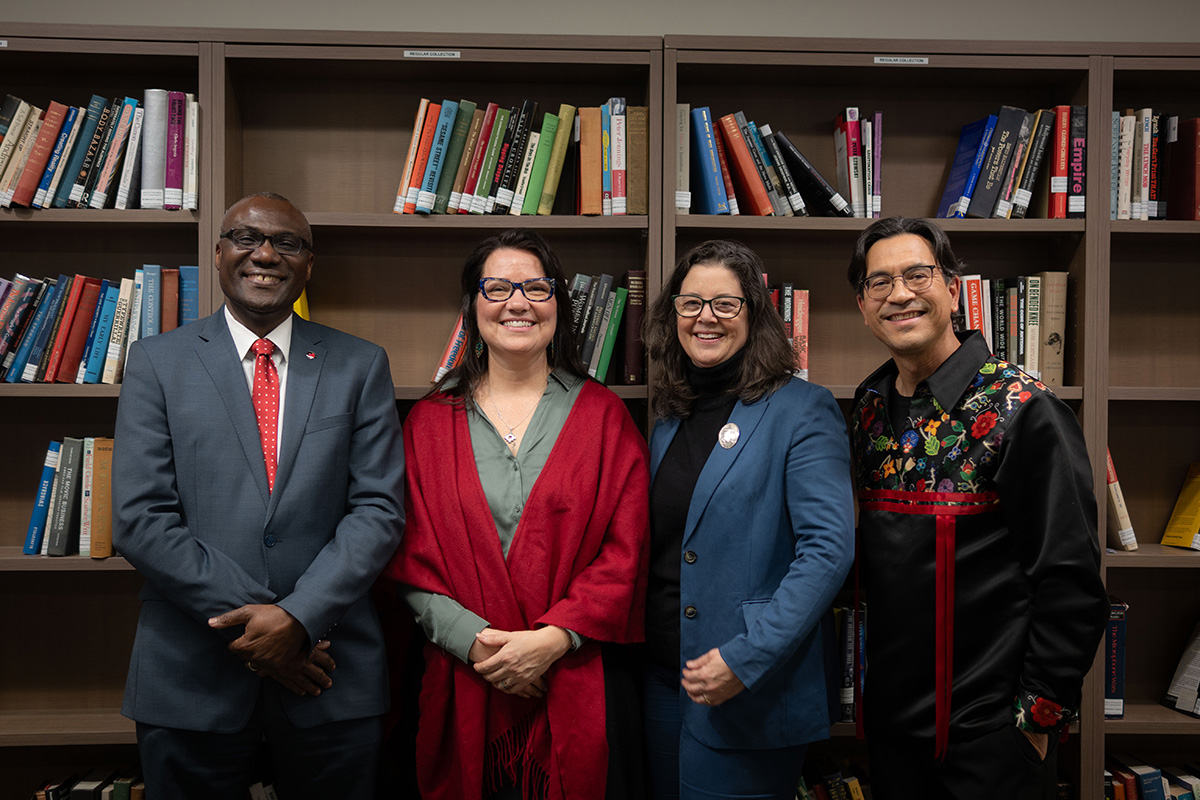
President Tettey, Associate Vice-President, Indigenous Teaching, Learning and Research Kahente Horn-Miller, Mastercard Foundation Senior Director, Canada Programs Jennifer Brennan, and Prof. McCue
In recognition of Carleton’s location on the unceded territory of the Algonquin Nation and to encourage local participation, free tuition will be offered to one student from the Algonquins of Pikwàkanagàn First Nation, one from the Kitigan Zibi Anishinabeg First Nation and one from the Mohawk Nation of Akwesasne.
Significant resources are required to provide these tuition incentives and subsidies for student travel and accommodation and to hire professional support staff. Which is why, when asked about the biggest obstacle to creating the CJIIC, McCue answers succinctly: funding.
Auspiciously, the Mastercard Foundation saw the CJIIC’s potential. Through a partnership with the foundation’s EleV Program, which recognizes that Indigenous youth are agents of change for their communities and the country as a whole and supports Indigenous young people through education and meaningful livelihoods, it is investing $3.2 million in the program.
That funding, in addition to development support from the Inspirit Foundation, will give students the best possible shot at success.
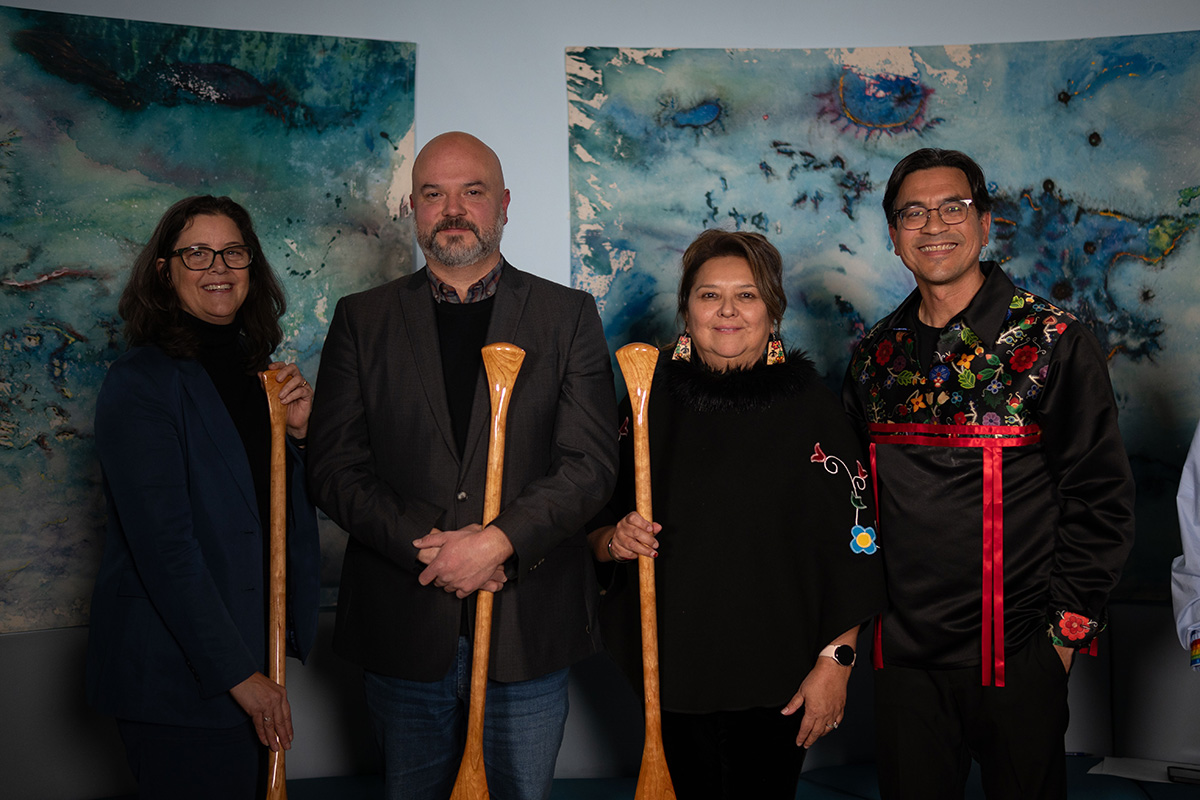
Program partners, including Brennan, First Nations Technical Institute (FNTI) Senior Vice-President (Academic) Adam Hopkins, Kenjgewin Teg President, Beverley Roy, and Prof. McCue
“This partnership promises to create a new generation of Indigenous journalists telling new stories from new perspectives,” says Jennifer Brennan, Senior Director, Canada Programs at the Mastercard Foundation, whose support was announced at Carleton’s Ojigkwanong Indigenous Student Centre on Jan. 29. “This program will benefit Indigenous youth and help all Canadians better understand Indigenous Peoples’ perspectives, priorities and realities.”
The Mastercard Foundation’s support “recognizes the tremendous value that Indigenous voices have always brought to making sense of the world through storytelling,” says Carleton President Wisdom Tettey.
“Canadian society as a whole will be enriched by the combination of perspectives, experiences and exceptional professional expertise that participants will gain from the program.”
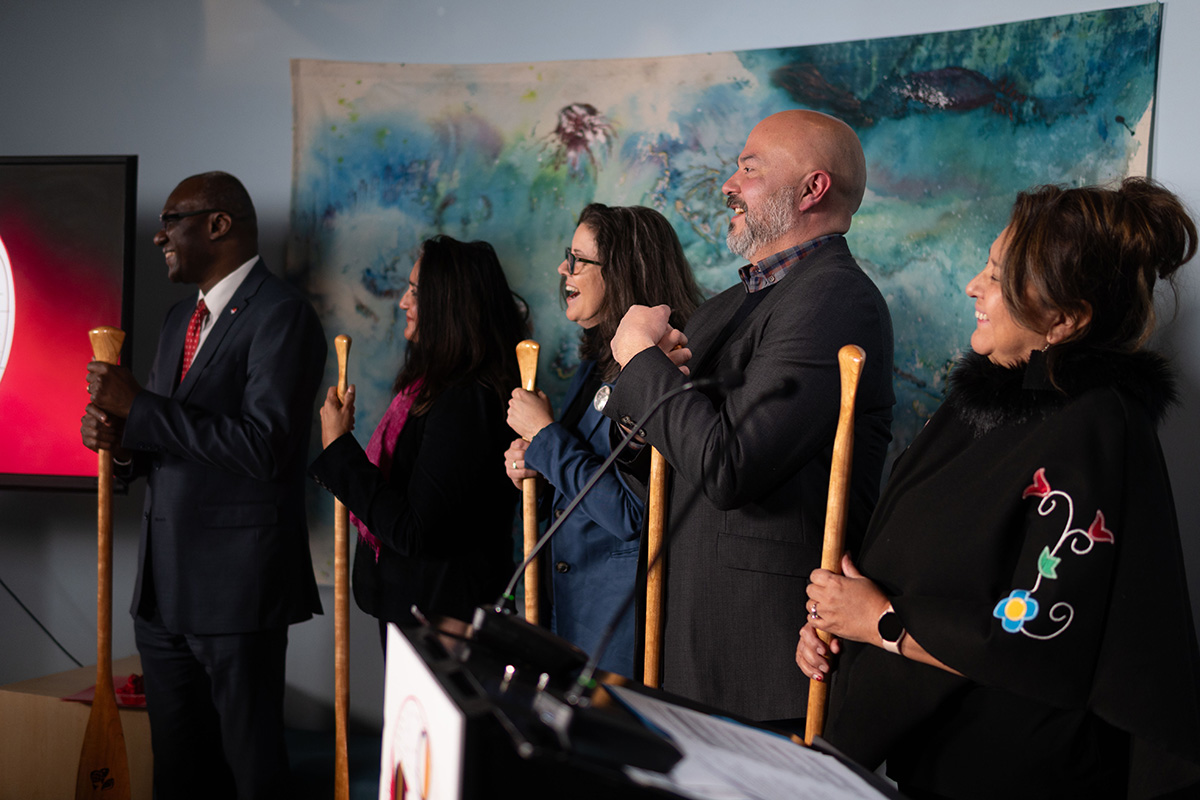
Entrepreneurial Journalism
The CJIIC includes classes on the foundations of journalism as well as audio journalism, photojournalism and entrepreneurial journalism.
Students who complete the program will be able to report and share stories for existing media outlets in their home communities or set up their own digital platforms. Some might apply for jobs in mainstream media, where there’s growing demand; McCue is constantly approached by people who are looking to hire Indigenous journalists.
Graduates will also be able to use the CJIIC to enter Carleton’s journalism program with advanced standing, or to enrol in the university’s new online Bachelor of Arts General Studies Degree.
“There are tremendous opportunities for young Indigenous journalists,” says McCue.
“You go into this type of work because you have a passion for storytelling and sharing news in your community, and you can make a living doing this. There is a lot of doom and gloom in the media industry, but I’m excited about the future of Indigenous journalism.”
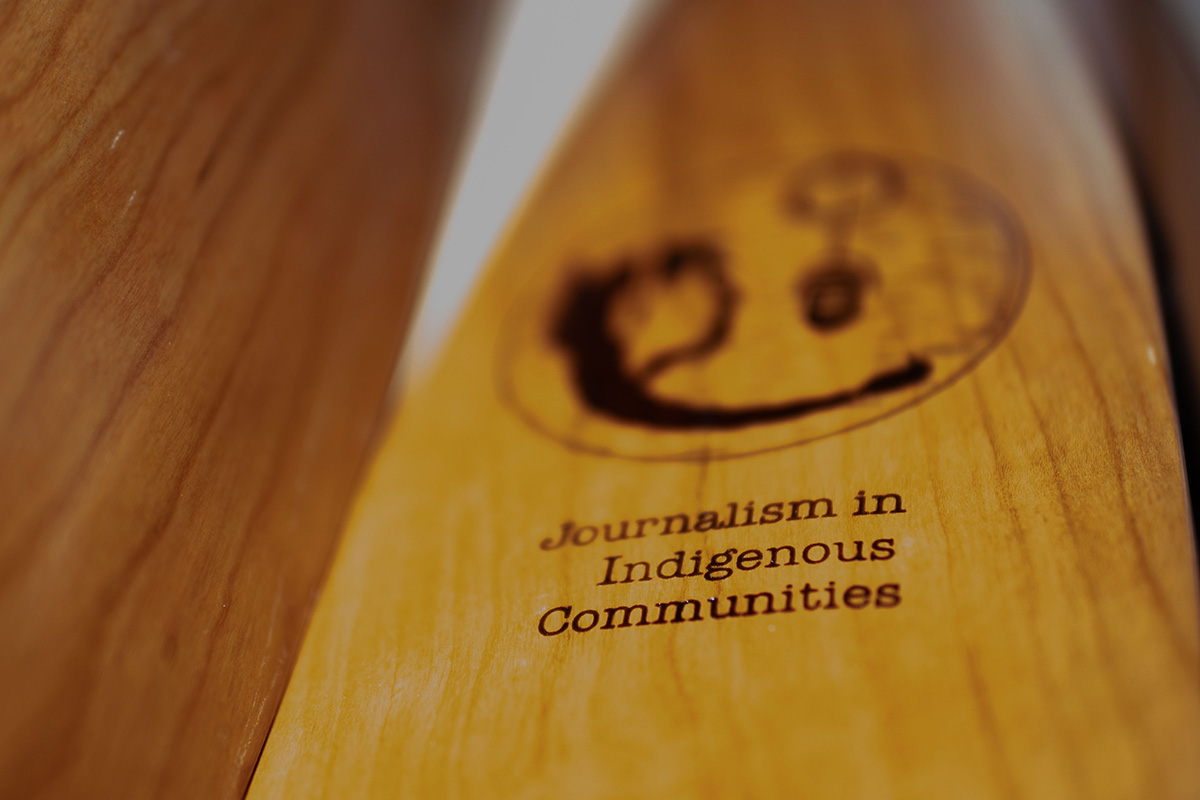
Thursday, January 30, 2025 in Indigenous, Journalism and Communication
Share: Twitter, Facebook
